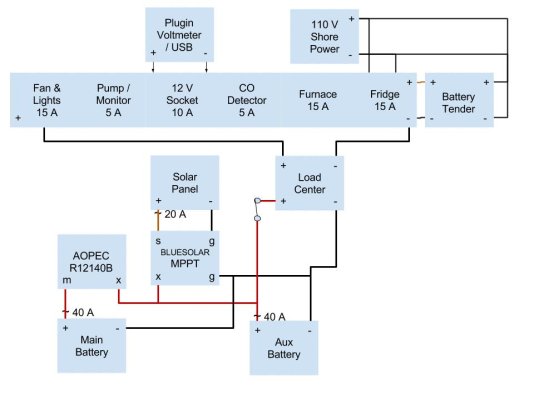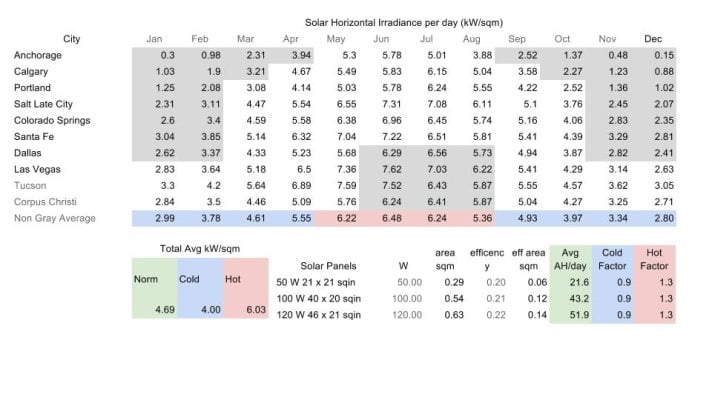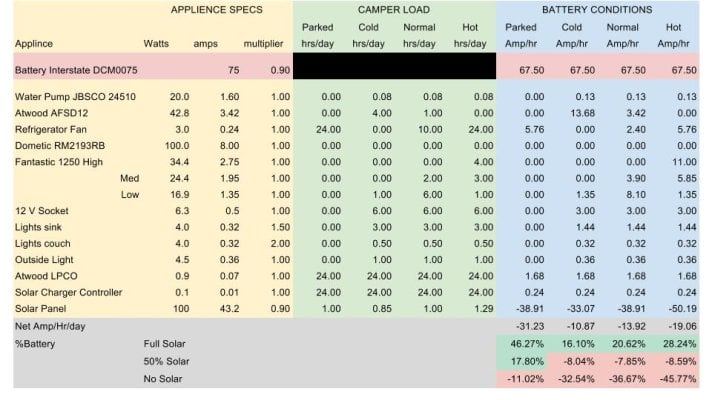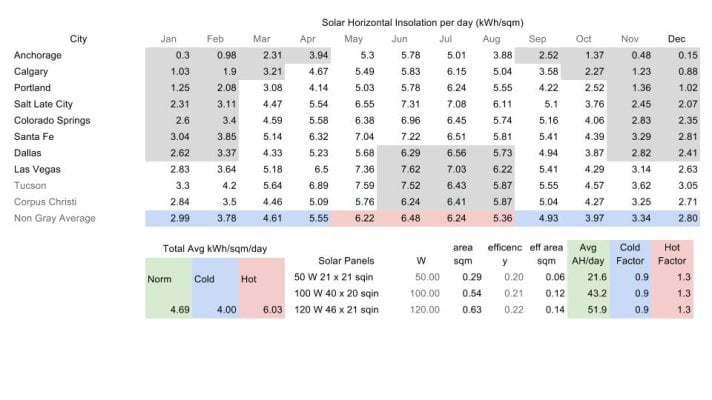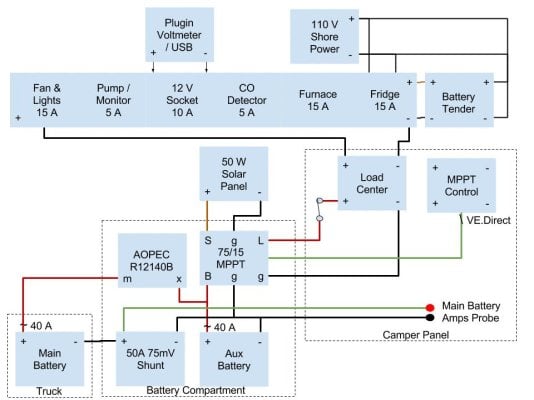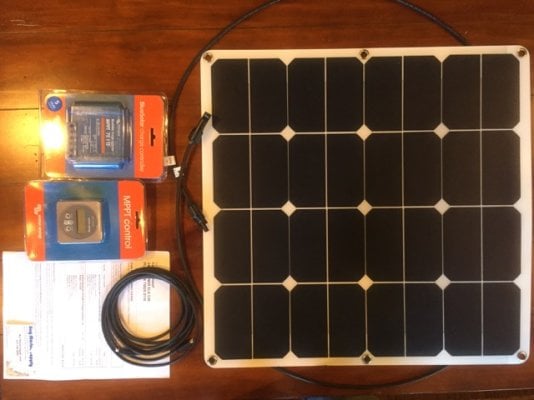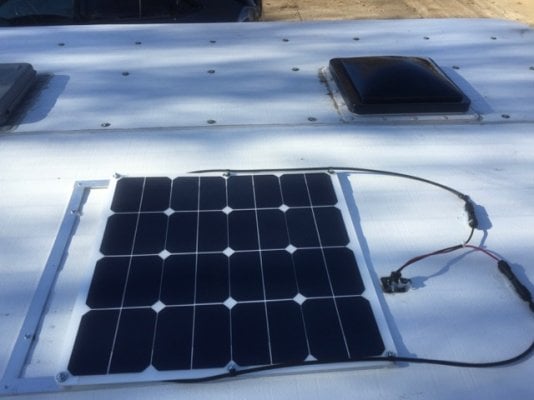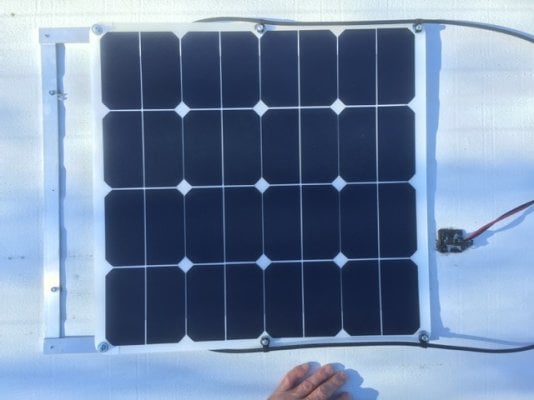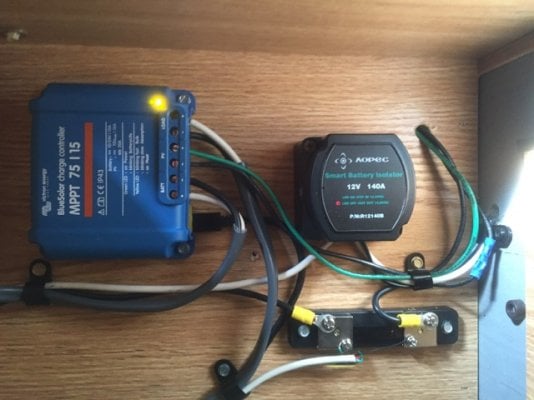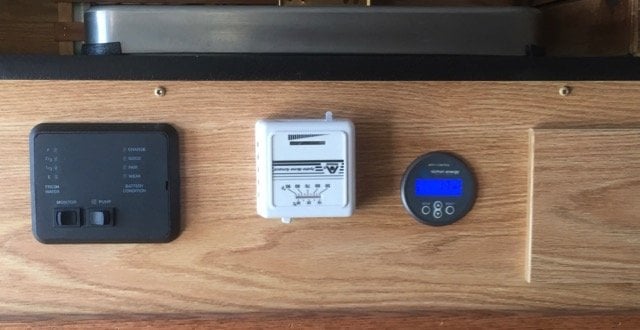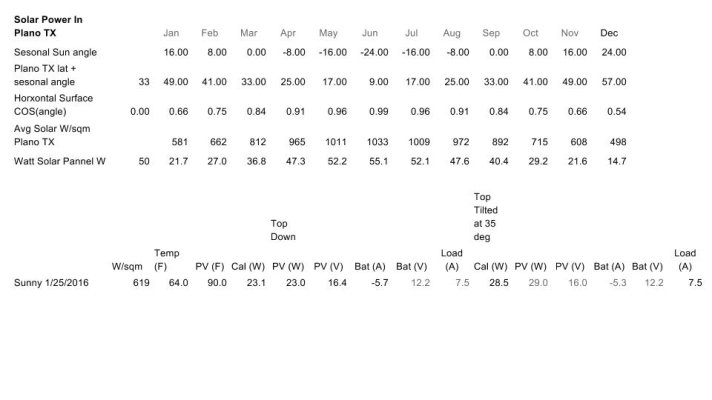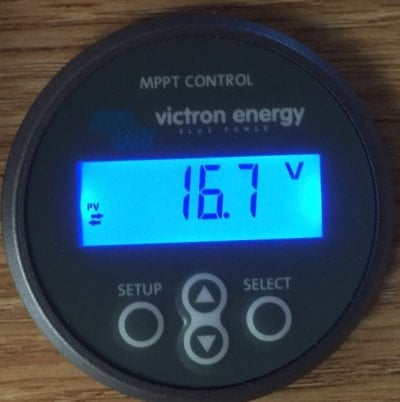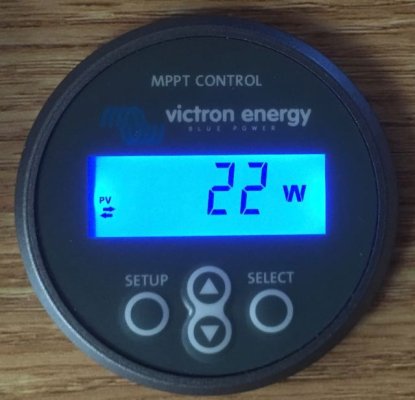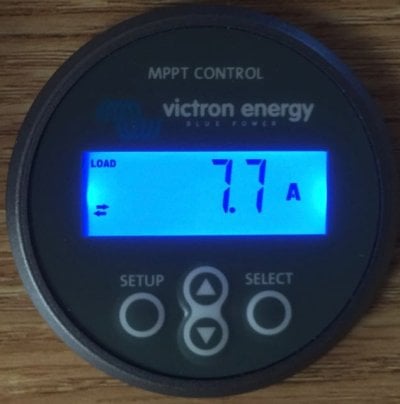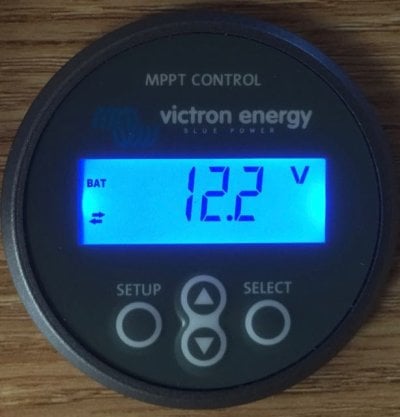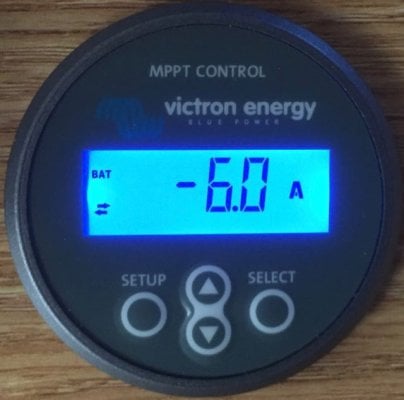carld
Senior Member
More thoughts on add solar. First things are working good without solar. I can spend 3 nights using the lights and heater and the battery drops to around 11.8v. More then 3 days and I need to idle the truck for an hr or two. For summer I park the camper with the fridge on low propane for 3 to 5 days while I’m in the backcountry. I run a 0.25 A. fan for the fridge while parked and it can drain the battery. I added a cheep 12 V battery tender that maintains both truck and camper batteries while parked at home and provides a 120V plug to coo down the fridge before the next trip.
I don’t have a lot to spend so I’m considering the following:
How much power can I expect from the solar panels?
What size of solar panels? I’m considering 1 50W, 1 100W or two 50W in series.
What type of charger, PWM or MPPT?
Ideally you would want the solar panels facing maximum sun. Portable panels would be the easiest but they are only active when you are stopped and they are easily stolen when unattended. Glueing panels to the roof are omnidirectional, always active and less noticeable. But just how effective are they? The website http://www.efficientenergysaving.co.uk/solar-irradiance-calculator.html calculates the solar irradiance kW/sqm per day for each month for cities around the world on the horizontal. I put together places dates I am likely to go and came up with an average kW/sqm/day for horizontally solar panel. The average is 4.7 kW/sqm/day.
See Table 1
It is interesting that Santa Fe is at a higher latitude than Dallas it gets more sun. And Tucson gets more sun than Corpus Christi. Maybe the Irradiance takes into account altitude and or humidity.
I'm considering SolarKing semi-flexible solar panels that are thin, light weight and easily glued to the camper roof. They run about $200 per 100W.
See Table 1
Also, what king of charge controller? The PWM is less expensive but overall has about a 70% conversion efficiency so the above AH/day are reduced by 70%. The MPPT converters are better and have a 90% to 95% efficiency. The MPPT converters also allow you to stack solar panels in series dubling the voltage so they continue to work on overcast days.
Apply this to the anticipated camper load per day I came up with the following:
See Table 2
Note I set the multiplier for the battery to .9 for aging and the Solar Charger to .9 for a MPPT. For a PWM the multiplier would be .7. Also I set the hot and cold factors to 1.29 and .85 assuming that the hot months are in the summer and the cold months are in the winter, the normal is a year average excluding the grayed areas. The hot and cold factors don’t include the efficiency of the solar cells or battery.
As a result I am think about starting out with 1 50W panel for $125 and a Victrron Bluesolar 75/15 MPPT controller for $120. The Bluesolar controller has a blue tooth interface to your smart phone monitoring battery voltage, solar panel power, and charge state. In the future I can add a second 50W panel in series to boost the power and the higher voltage the panel combo will work better for overcast conditions.
I don’t have a lot to spend so I’m considering the following:
How much power can I expect from the solar panels?
What size of solar panels? I’m considering 1 50W, 1 100W or two 50W in series.
What type of charger, PWM or MPPT?
Ideally you would want the solar panels facing maximum sun. Portable panels would be the easiest but they are only active when you are stopped and they are easily stolen when unattended. Glueing panels to the roof are omnidirectional, always active and less noticeable. But just how effective are they? The website http://www.efficientenergysaving.co.uk/solar-irradiance-calculator.html calculates the solar irradiance kW/sqm per day for each month for cities around the world on the horizontal. I put together places dates I am likely to go and came up with an average kW/sqm/day for horizontally solar panel. The average is 4.7 kW/sqm/day.
See Table 1
It is interesting that Santa Fe is at a higher latitude than Dallas it gets more sun. And Tucson gets more sun than Corpus Christi. Maybe the Irradiance takes into account altitude and or humidity.
I'm considering SolarKing semi-flexible solar panels that are thin, light weight and easily glued to the camper roof. They run about $200 per 100W.
See Table 1
Also, what king of charge controller? The PWM is less expensive but overall has about a 70% conversion efficiency so the above AH/day are reduced by 70%. The MPPT converters are better and have a 90% to 95% efficiency. The MPPT converters also allow you to stack solar panels in series dubling the voltage so they continue to work on overcast days.
Apply this to the anticipated camper load per day I came up with the following:
See Table 2
Note I set the multiplier for the battery to .9 for aging and the Solar Charger to .9 for a MPPT. For a PWM the multiplier would be .7. Also I set the hot and cold factors to 1.29 and .85 assuming that the hot months are in the summer and the cold months are in the winter, the normal is a year average excluding the grayed areas. The hot and cold factors don’t include the efficiency of the solar cells or battery.
As a result I am think about starting out with 1 50W panel for $125 and a Victrron Bluesolar 75/15 MPPT controller for $120. The Bluesolar controller has a blue tooth interface to your smart phone monitoring battery voltage, solar panel power, and charge state. In the future I can add a second 50W panel in series to boost the power and the higher voltage the panel combo will work better for overcast conditions.

